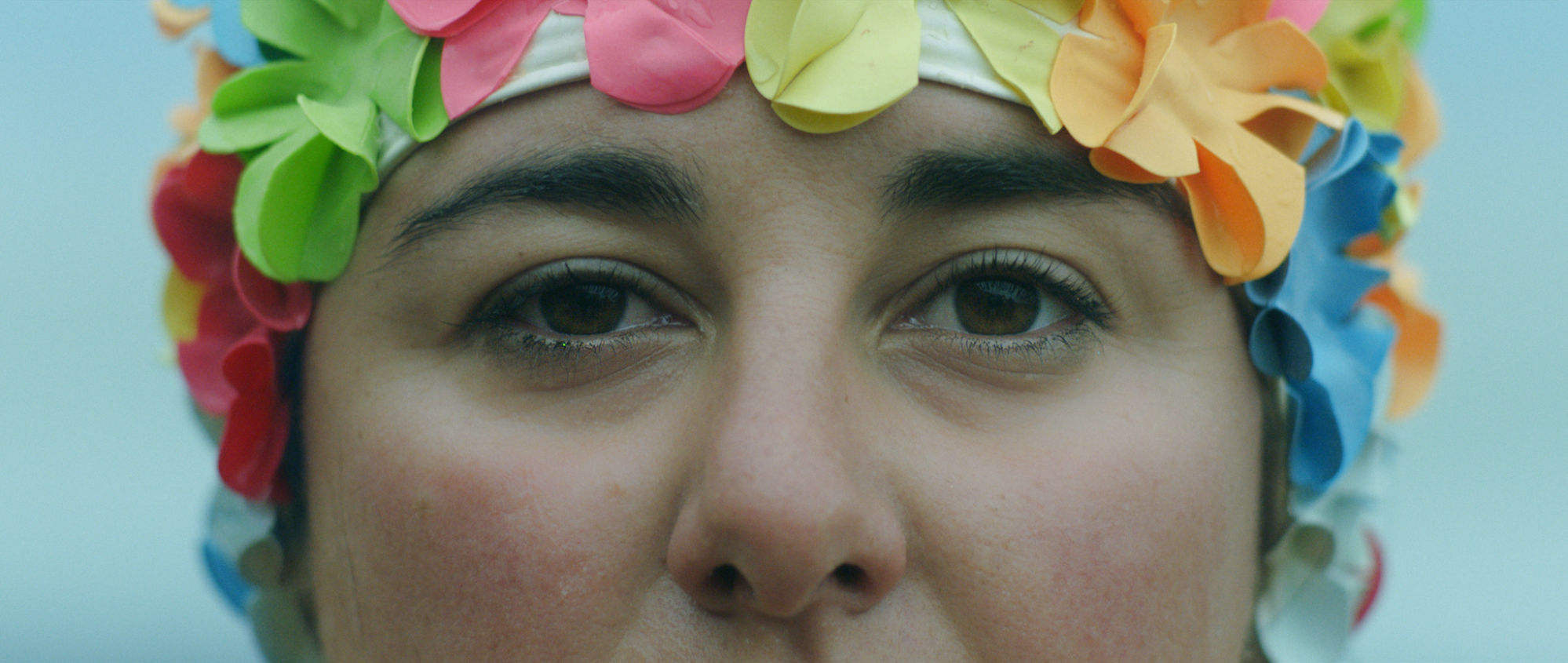
The gap between the reality of living in a place and the way it’s represented in the media can often be vast. Beneath the lingering headlines of political strife and xenophobia typically associated with the town of Margate, lies a diverse community becoming more vibrant by the day. It is this joyful demographic soup that recent Margate transplants filmmaker Kathryn Ferguson and writer Anna Hart dip into in short documentary Taking the Waters – a meditative exploration of the community spirit to be found amongst the swimmers who populate an eighty-year-old tidal pool. I spoke to Kathryn and Anna about the appeal of the revitalised coastal town and the levelling power of freezing cold seawater.
What was it that first inspired you both to ditch London for Margate?
We both had friends who had moved to Margate a few years before we did and from chatting to them it sounded like a bit of a dream. Fresh air, a burgeoning creative scene, affordable housing, the sea and most of all full of possibility. Kind of the opposite of how London had begun to feel. Weirdly we had both separately toyed with the idea of a move to L.A that year and in the end, chose Margate. Margate just felt exciting and new, yet full of our like-minded folks with big hopes for the future.
How did you become aware that there was a story to tell centred around the visitors to this 80-year-old tidal pool?
We decided to make the film two weeks after we began swimming there together in early Summer 2016. We’d both moved the week after Brexit and were fairly distressed, to say the least, about the state of the country. Our daily swims helped us through that and as a result, we met a very eclectic mix of swimmers. We realized pretty fast that the pool served as a microcosm of the rest of the UK; this demographic soup that we found ourselves in was wildly diverse full of every ethnicity and age group in the UK. And happily, cold water seems to rinse away any latent xenophobia or hostility. The pool seemed to restore our humanity and in freezing water people are nice to each other. We felt that the beauty of the pool, and the beauty of the human interactions we were witnessing, felt like a great starting point for a documentary.

The pool seemed to restore our humanity and in freezing water people are nice to each other.
Despite the many years of political and racial turmoil in the town, Taking the Waters presents a more harmonious portrait of Margate’s residents than is typically seen in the press. To what extent was that approach a conscious decision?
Our initial approach was to make a much more political film, but we soon made a concerted decision not to focus on division and tension, and instead produce something celebratory. So in the edit, we left much of the political commentary out and instead focused on the pool as a safe space for the community, and the joy and healing powers of the sea. We also wanted Taking the Waters to be an ode to the pool itself who has weathered 80 years of political turmoil, so we chose to focus on the solace it brings instead of dwelling on division.
How did you build out your diverse cast of swimmers, were there particular ‘types’ you had in mind?
We quite literally met most of our cast by swimming up to them in the pool! We wanted to make sure we shot a true representation of who used the pool so that was our key focus when beginning to cast this film. We quickly met a vastly diverse bunch of people and it was more about deciding who to cut as opposed to struggling to find interesting people to feature in it. The pool is like a watering hole that attracts every walk of life. Many more would have made the final cut if we’d had the time.
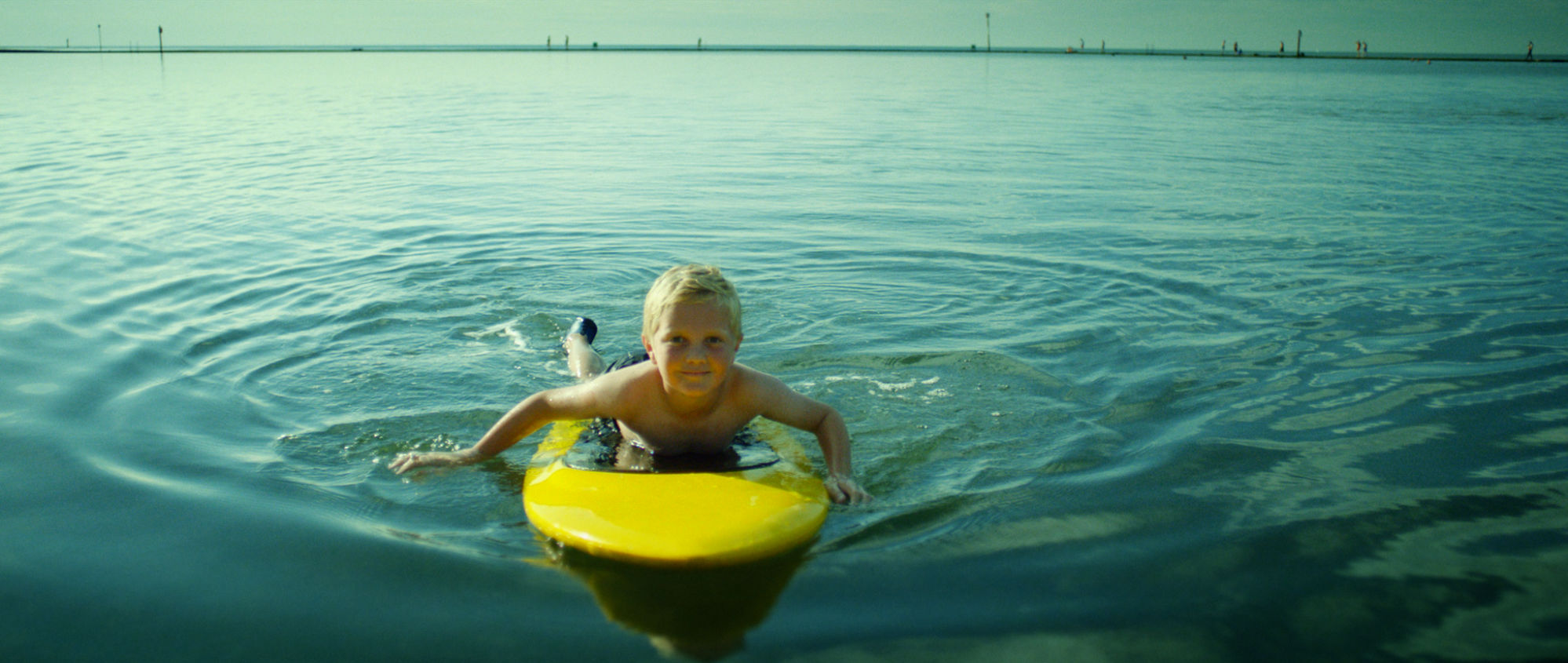
Working as co-directors on the film, did you take a divide and conquer approach or were there particular aspects of the production that you each took responsibility for?
We pooled together our skills as a working director (Kathryn) and working journalist (Anna) to approach this subject in a way that neither of us had previously worked before. We tried to do most of the film together from directing the action, to interviewing the cast, to the edit. When time was short, like it always is on any set, we divided and conquered when necessary. We worked with Kathryn’s fantastic crew who all very generously gave us two full weekends of their lives to come down to Margate and make this passion project with it. Like any film, it’s a product of lots of passionate people trying to tell a story together.
In what ways did the outdoor location, not to mention the close proximity to water, define your choice of equipment and shooting style for the film? When did it become clear that the tone of the film would be best served by extensive slow-motion cinematography?
We wanted the film to represent how we feel when we are swimming in the sea, the end result being a film that is immersive, meditative and joyous to experience. We managed to blag an Alexa and attempted a few dips with it in the pool in protective casing as we wanted to swim beside people but the sheer weight of it and the nature of the sea proved quite difficult. In the end, we were able to shoot off the walls of the pool on a longer lens. On the blustery, stormier days of shooting, we just had to hold our nerve and accept that we were all going to get soaked and potentially blown in. Our Producer Shabana Mansuri also managed to convince a very helpful drone crew to come down from London for the day so they could help us capture the sheer size of the pool and its position on the Kentish coastline.
We just had to hold our nerve and accept that we were all going to get soaked and potentially blown in.
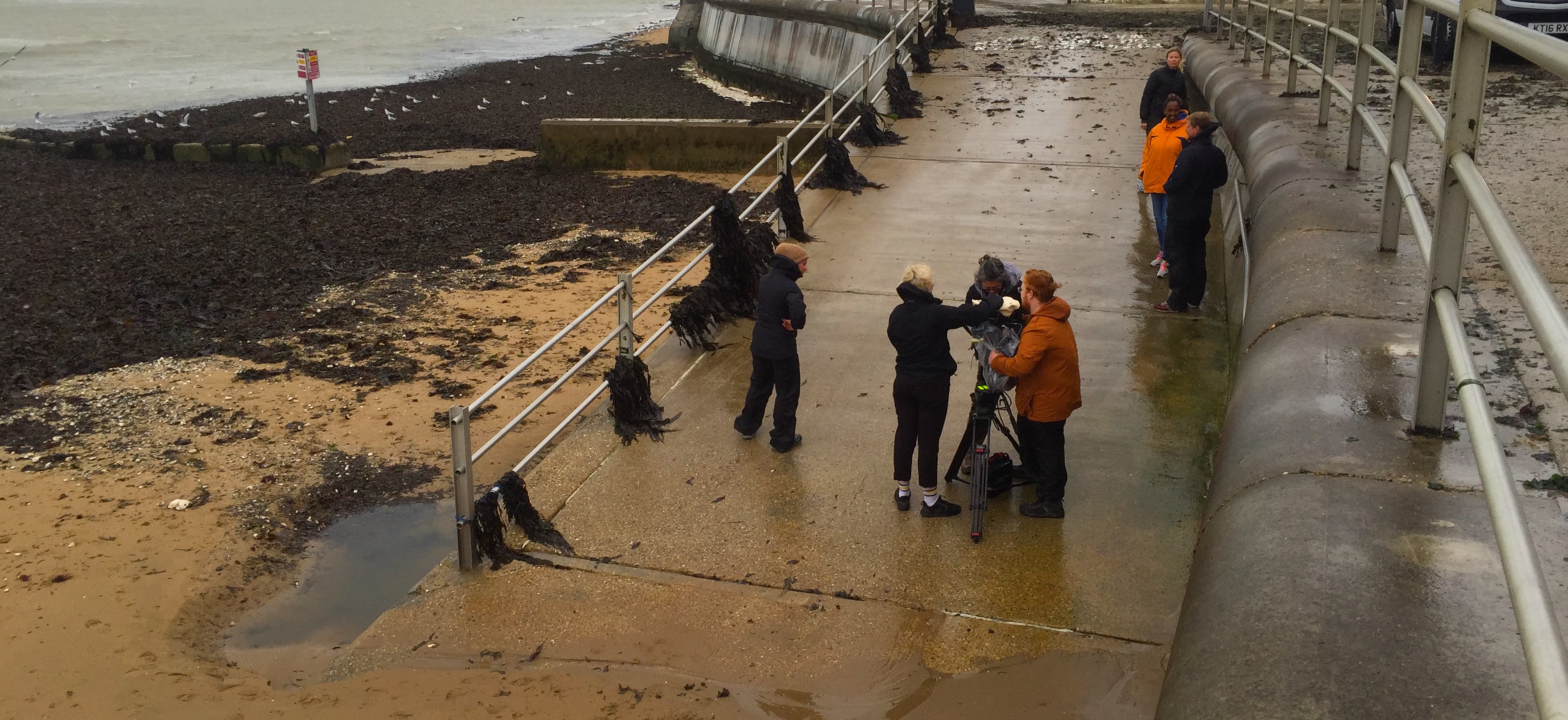
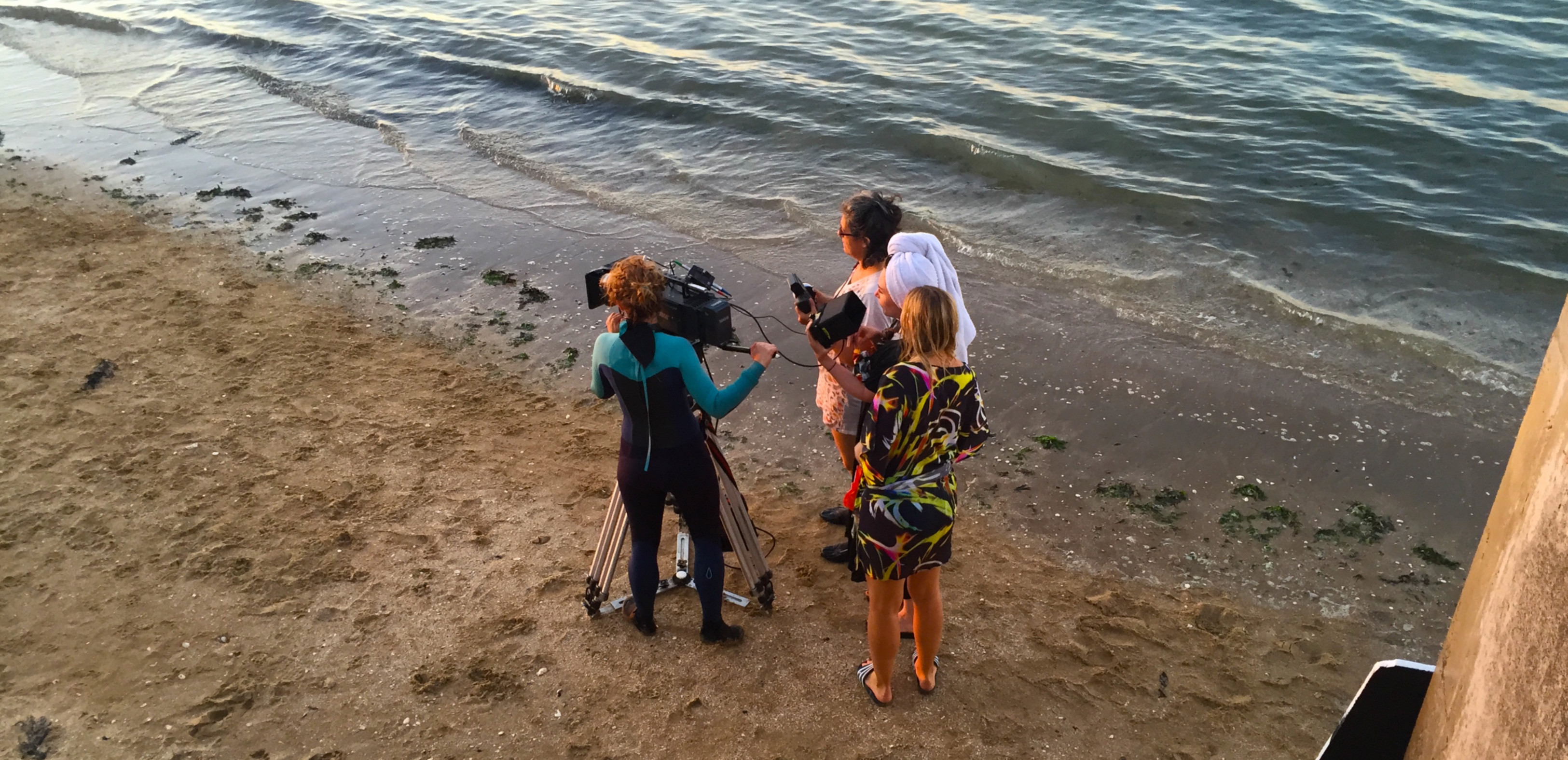
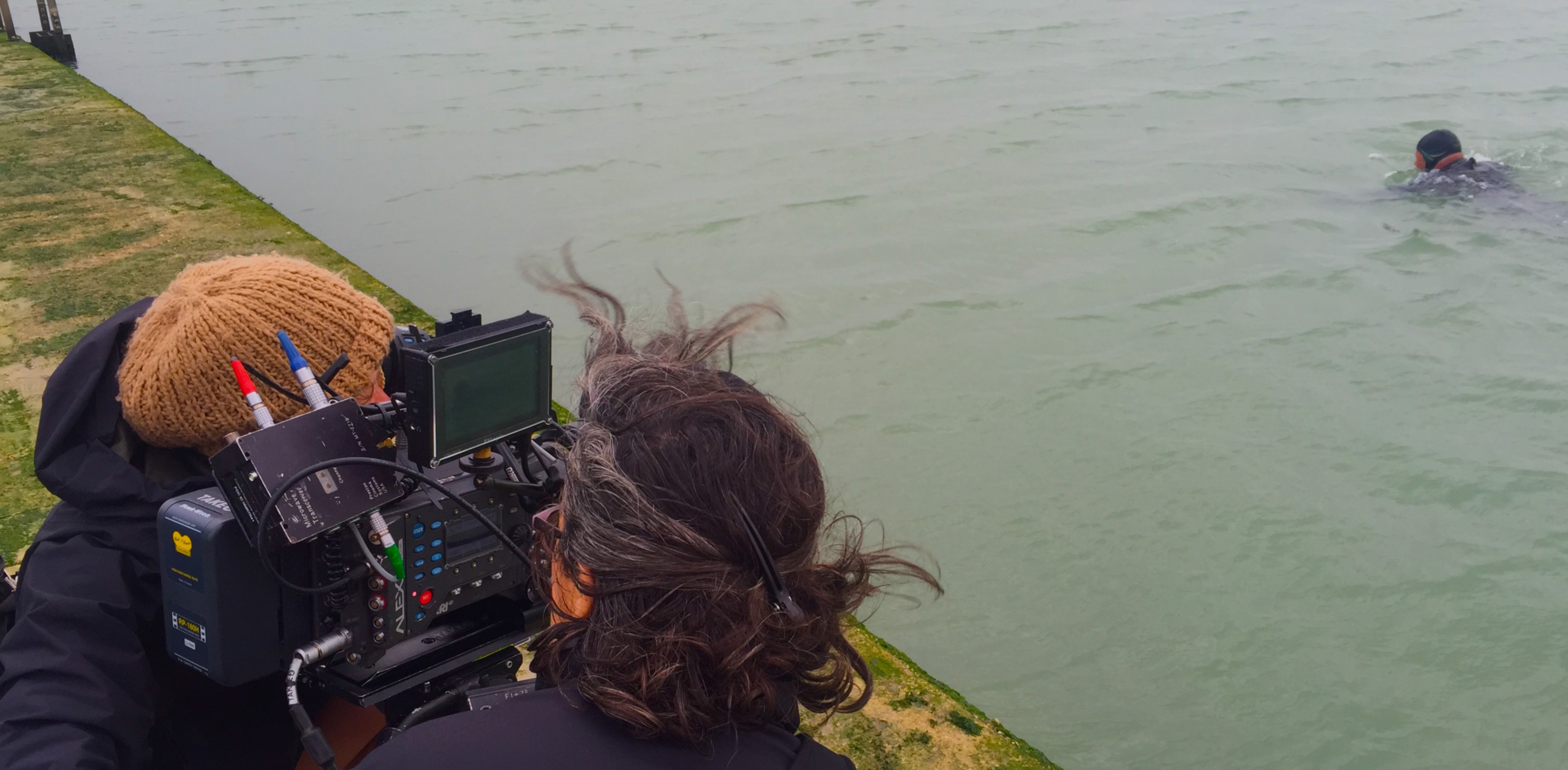
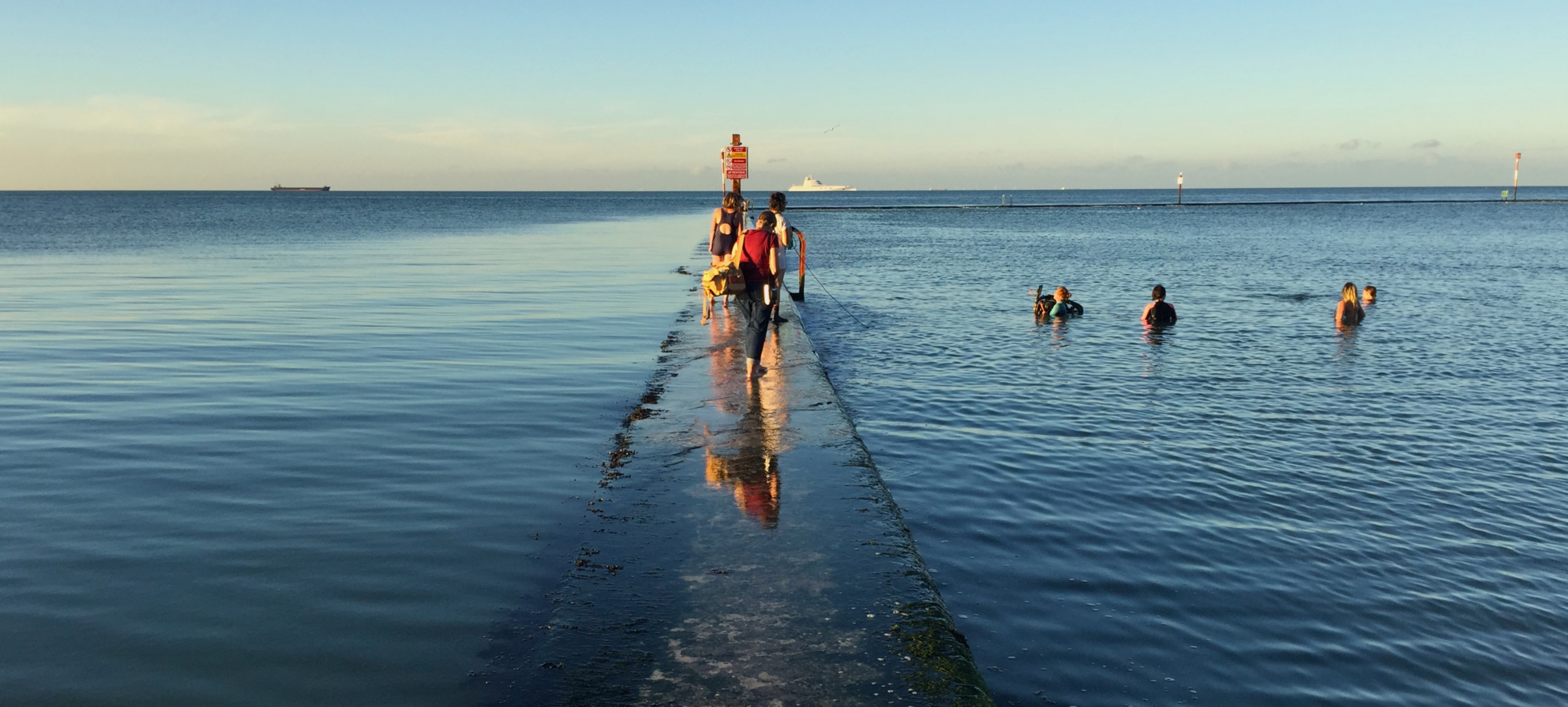
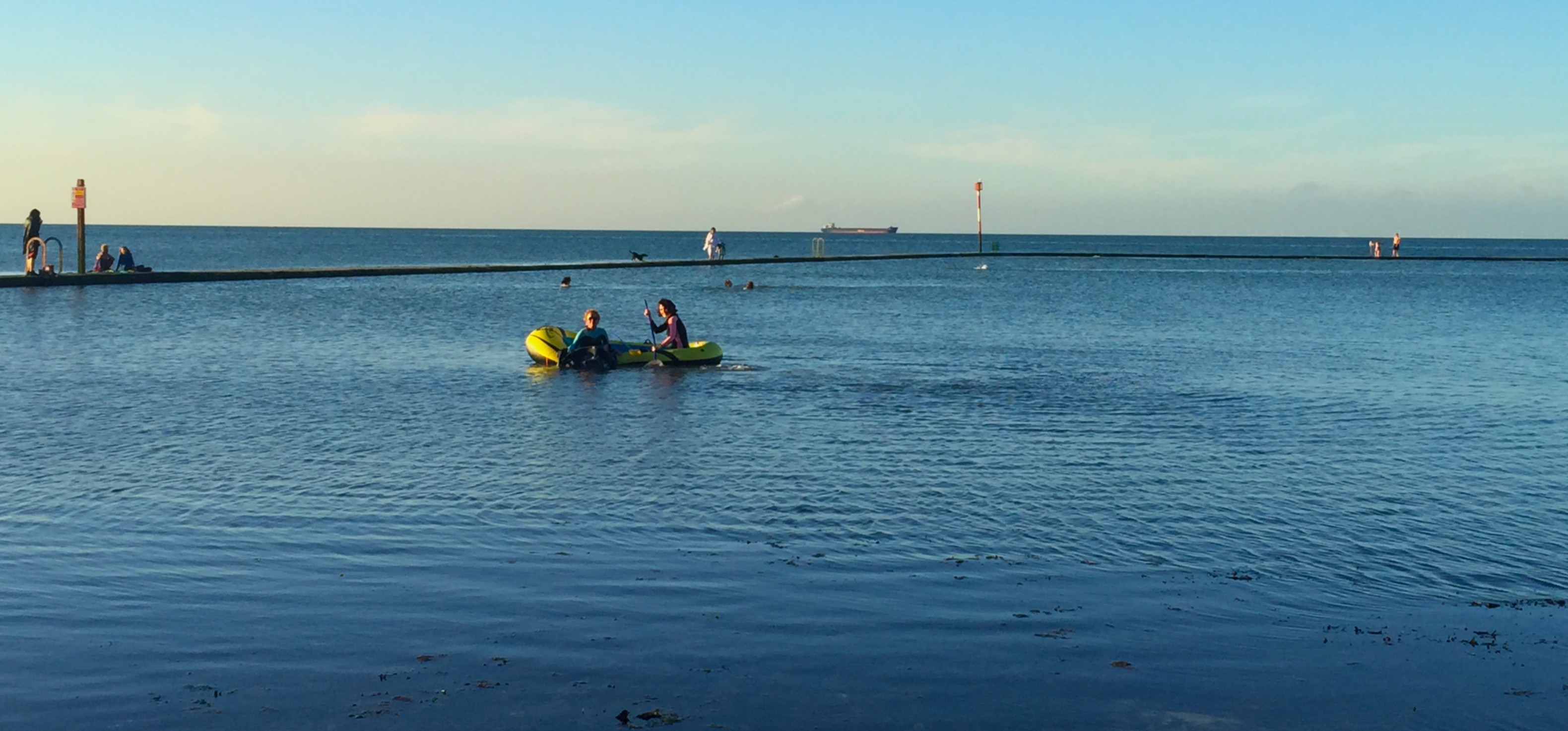
The calming, lethargic rhythm of the visuals is greatly enhanced by original music from electronic duo Lung Dart, how did they become involved with the project?
Margate has a mutually supportive and incredibly warm creative scene, and we knew that Moshi Moshi’s Stephen Bass (co-founder) had recently set up Prah Recordings, as a subsidiary to Moshi and a Margate-based label. We always knew that we wanted to feature local musicians as part of the soundtrack so when Stephen introduced us to Lung Dart and we listened to their tracks, which all were coastal related, it felt like a perfect match. The songs again reminded us of how we feel when we swim so we were delighted when they agreed to let us use their album for the soundtrack. Alexi Taylor from Hot Chip also kindly let us use one of his tracks that he had previously re-recorded with his and Lung Dart’s vocals as part of the film’s soundtrack.

Taking the Waters made its world premiere debut at Sheffield Doc Fest, how was the film received?
It was very well received and we had wonderful support from the crowd post-screening. People always tell us how emotional it makes them feel, especially as there has been so much negative press about Margate in previous years. We’d already had a sneak preview of an earlier cut in Margate last summer and were really shocked and humbled by how much it seemed to touch people. Having the official premiere of the completed film at Sheffield Documentary Festival was a dream come true and we are really excited for it to now begin its life on the festival circuit.
What will we see from you both next?
We are both still living and working in Margate. Kathryn has begun work on her first feature doc and Anna has just published her first book. We hope to create more work together in the future.


